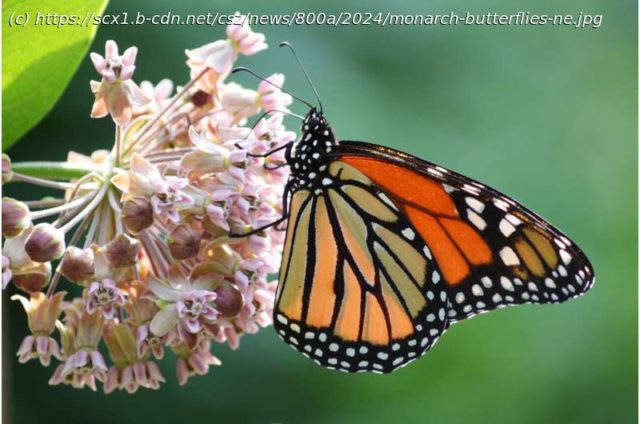Monarch butterflies, with their striking orange and black wings, are some of the most recognizable butterflies in North America. But they’re in trouble.
Monarch butterflies, with their striking orange and black wings, are some of the most recognizable butterflies in North America. But they’re in trouble.
Monarch caterpillars can only eat the leaves of milkweed, a native wildflower. As milkweed has disappeared, so have the monarchs, to the point that they’re at risk of extinction. Research shows that planting milkweed in home gardens can add significant monarch habitat to the landscape.
In a new study in the journal Frontiers in Ecology and Evolution, researchers and community scientists monitored urban milkweed plants for butterfly eggs to learn what makes these city gardens more hospitable to monarchs. They found that even tiny city gardens attracted monarchs and became a home to caterpillars.
« In this study, we found that monarchs can find the milkweed, wherever the milkweed is, even if it’s in planters on balconies and rooftops », says Karen Klinger, a Geographic Information Systems analyst in the Keller Science Action Center at the Field Museum and the study’s lead author.
« Milkweed gardens can be in all shapes and sizes, and any milkweed garden can contribute habitat for monarchs. »
Monarch butterflies have one of the most unusual and demanding migration patterns of any insect. The eastern population of monarchs starts the year in Mexico, and they move up across North America in the spring and summer.
« As they travel, they lay their eggs, and when those adults die, the next generation continues the migration northward. They will make it all the way to southern Canada, and at the end of summer, a new super generation is born that migrates all the way south and survives through the winter », says Klinger.
Since it takes multiple generations of milkweed-eating caterpillars to get the monarch population from Mexico to Canada each year, the monarchs rely on milkweed plants throughout their migration path.
« There used to be wild milkweed growing along farmland in the Midwest, but now farmers use pesticides that kill the milkweed. As a result, a lot of the habitat for monarchs in the Midwest has disappeared », says Klinger.
Monarch populations have declined along with the disappearance of milkweed; in recent years, they’ve been a candidate for endangered species status by the International Union for Conservation of Nature and the US Fish and Wildlife Service.
Home
United States
USA — IT Monarch butterflies need help, and research shows a little bit of milkweed...






